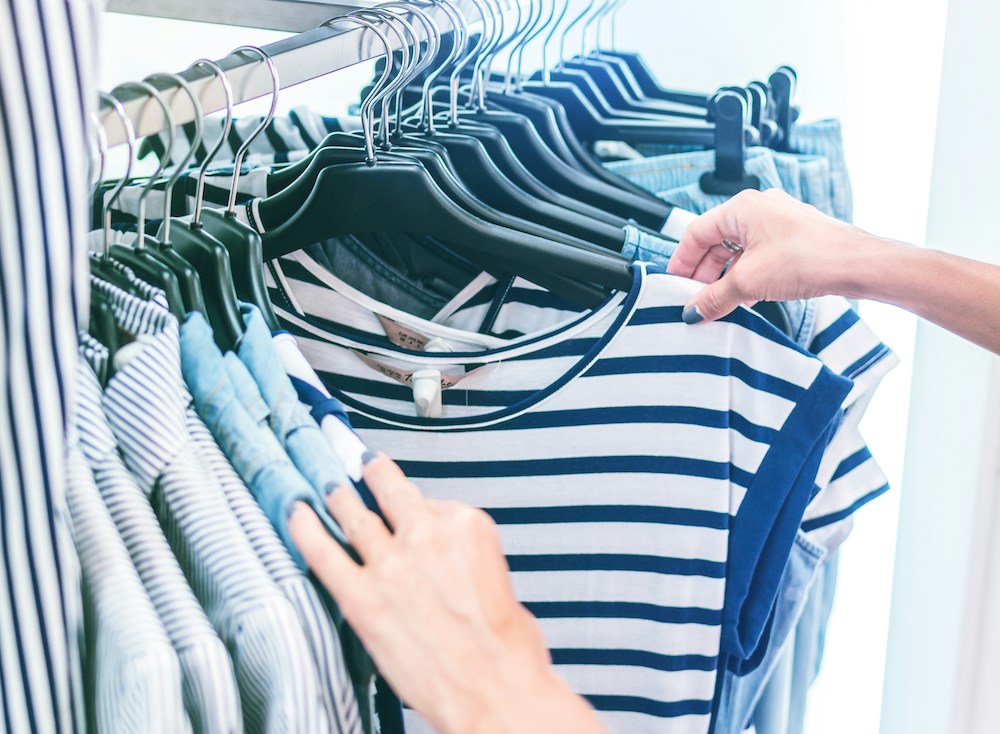Apparel accounts for almost a quarter of all U.S. online retail sales, and it also has the highest return rate. According to Coresight Research, about 26% of clothing items will be returned this holiday season, costing retailers about $150 billion in return shipping and restocking fees. Clothing returns are bad for the planet, too, with fashion ranking as the world’s second biggest polluter behind the oil industry. The bottom line: we need to drastically reduce our return rates, for the benefit of our businesses, our economy, and our world. Here are some ways you can reduce clothing return rates.
Provide accurate product descriptions
With today’s evolving photo and video manipulation technology, it’s easier than ever for online retailers to stretch the truth about their products. However, avoid the temptation to drive up purchases with over-altered product images. While this may boost your initial sales, it will drive up your long-term expenses, and damage your customer trust. Instead, make sure to use high-quality, professional product images. Showcase products in a variety of light sources and from a variety of angles. You can also help customers discern a product’s weight and texture by providing a brief video of fabric moving and shifting. In your product descriptions, be sure to describe the product materials and care instructions.
Provide diverse size representations
It is customary for clothing brands to include a sizing chart with measurements for each size. However, the majority of customers will not take the time to measure themselves, resulting in poor expectations of fit. It doesn’t help that clothing sizes are notoriously inconsistent between retailers. In fact, TrueFit found that a women’s size 6 pair of jeans could have a waistline variance of as much as five inches, depending on the brand.
One great way to address these issues is to display products on a diverse range of models. This can help customers determine whether an item will flatter their particular size, height, and/or skin tone. Be sure to also list the weight and measurements of each model, along with their photos.
Another great solution is to incentivize customers to submit reviews that feature photos of themselves. Promising a free gift item, a discount on future purchases, or some other perk can help encourage customers to leave photo reviews. Spending money on an incentive is well worth the investment. Reviews will help decrease returns and encourage uncertain buyers to make a purchase in the first place.
Improve your quality control
The vast majority of clothing items are returned due to sizing issues. However, some are returned due to quality issues, such as rips, loose threads, and missing buttons. If you are sourcing your items from somewhere else, make sure to carefully inspect every product you receive before placing it for sale. (If you own a dropshipping business, you will not be able to inspect items yourself before they are sent to customers, which is one of the reasons why we don’t recommend it).
You should also be careful about where you store your inventory. Humidity, temperature, and other environmental issues can damage merchandise over time. Be sure that items are stored in pest-proof containers, far away from bad smells and potential contaminants. Once an item is ready to be shipped to a buyer, give it one final inspection before placing it in its package.
Assess Your Packing and Shipping Methods
That brings us to packaging and shipping. Clothing items aren’t generally damaged from rough handling. However, they can sometimes be stained if they are not secured in plastic packaging. Sometimes, customers will damage clothing by opening boxes of items with a box cutter. To prevent this, try placing a few sheets of cardboard on top of the products before sealing the box.
Delivery delays are a much more common cause of returns. Customers often order certain clothing items for an important event, or to give as a gift. If the item does not arrive in time, it will be returned. Therefore, try to provide accurate delivery estimates, and send customers tracking information once they have placed their orders. If delayed shipments are becoming an increasing issue, you may need to refine your distribution process or switch your carrier.
Finally, you will want to track and address fulfillment errors. These are errors wherein the customer is sent the wrong-sized product, wrong-colored product, or wrong product altogether. If you are issuing too many refunds due to fulfillment errors, you may need to re-train your in-house staff or switch your fulfillment vendor.
Identify (and discourage) serial returners
More and more shoppers are participating in dishonest practices such as “wardrobing.” This is when a buyer will purchase an item to wear for a single event, then return it once the event is over. Another common return behavior is “bracketing,” wherein buyers will buy an item in multiple sizes and colors, and return almost every purchase. You can reduce these types of returns by keeping careful track of serial returners, and excluding them from making returns in the future. You could also offer store credit instead of a refund, or add a restocking fee. Some brands even take it a step further by sending serial returners a warning email, or banning them from making purchases altogether.
Get more small business help from SSI Packaging!
With the holidays rapidly approaching, we hope this blog will help you decrease returns. For more tips on managing returns, check out our small business returns guide here. And if you need any help packing, tracking, or shipping your inventory, please don’t hesitate to give us a call!
SSI Packaging is a family-owned packaging company based in Richmond, VA. From marking and coding equipment, to boxes, to bubble wrap, we offer everything small businesses need to grow and thrive.

